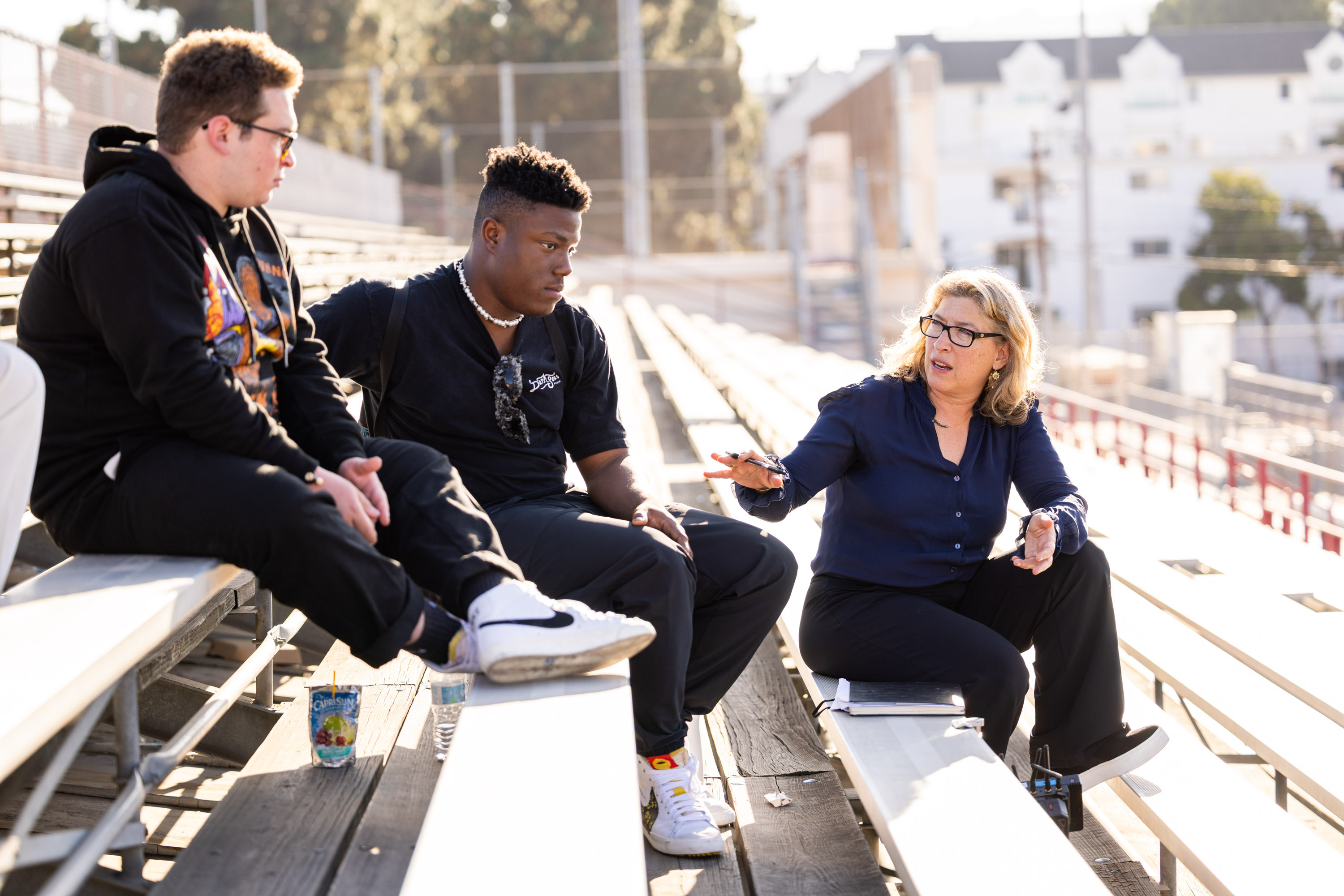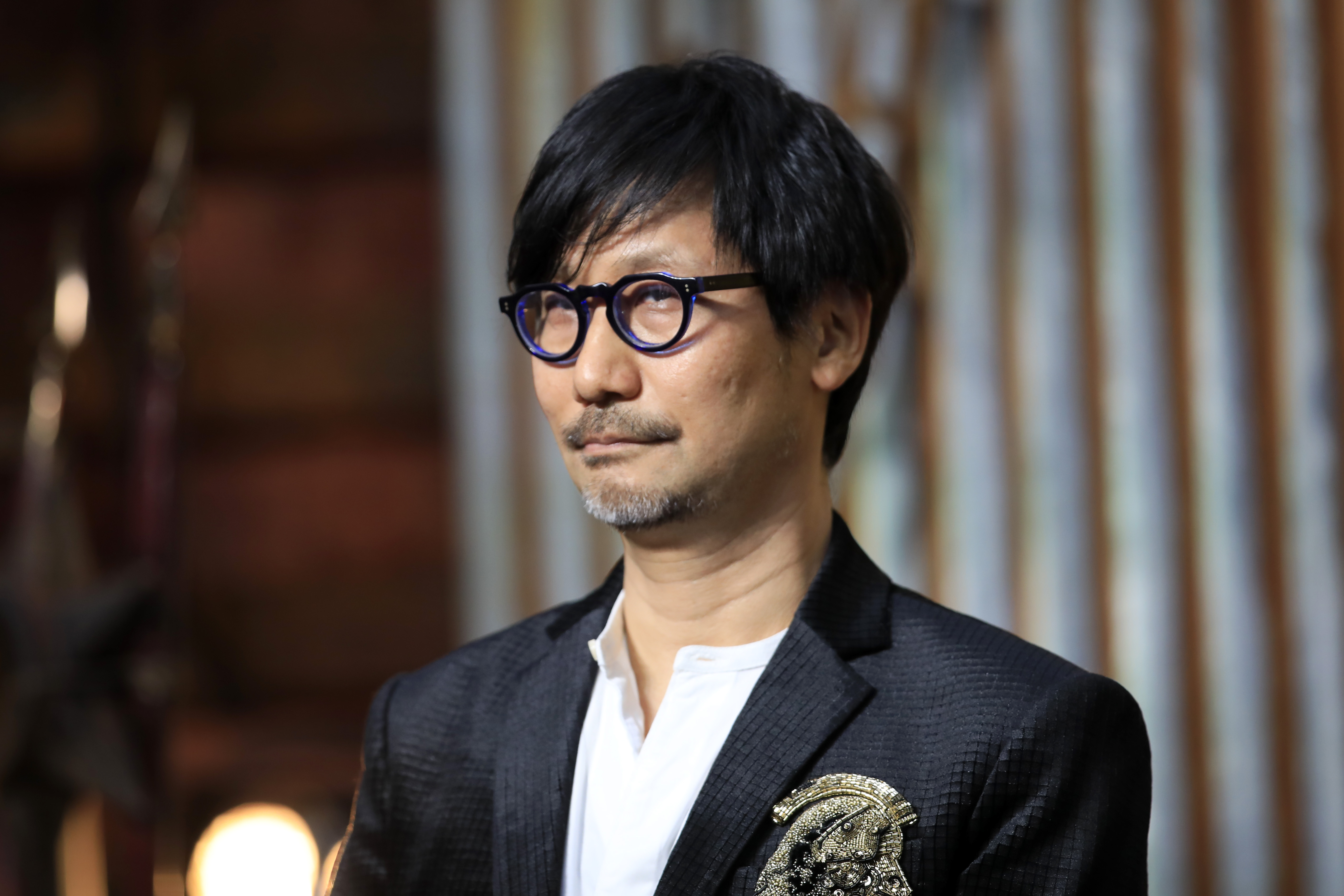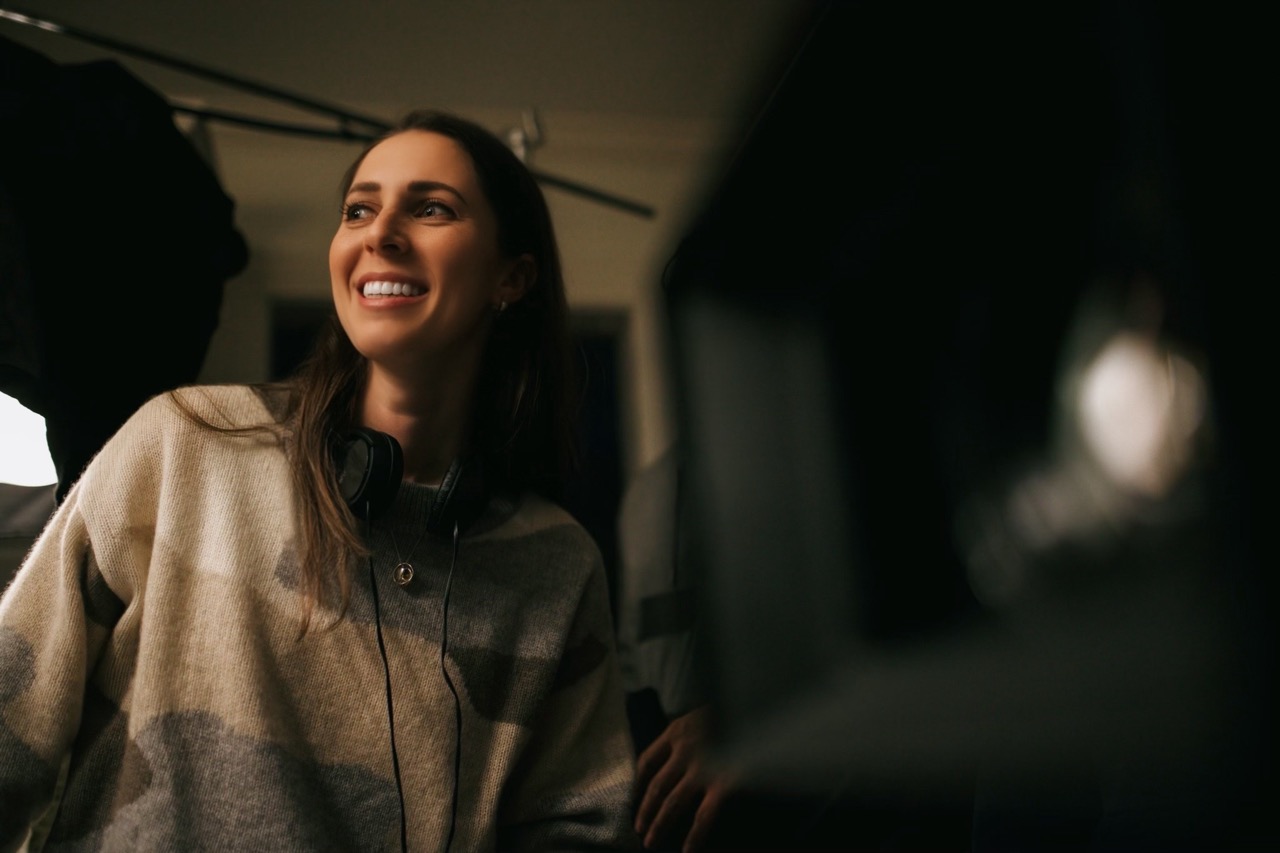Lauren Greenfield wasn’t expecting an Emmy nomination for Outstanding Documentary or Nonfiction Series for her five-part FX documentary series “Social Studies,” which documents in disturbing detail over one year the intimate relationship between high school kids and their cell phones. Greenfield is happy to grab more attention for the series, because she’s on a mission. Known for her film portraits of upscale society in “The Queen of Versailles,” “Generation Wealth” and “The Kingmaker,” this time Greenfield casts her eye on a wide swath of Los Angeles teenagers.
“At a time when people are paying more attention to celebrity,” she told me on Zoom, “it’s quite difficult to get a serious show like this out into the world to find its audience.” The concern with social media’s impact on teenagers is universal, Greenfield learned on her global promo tour. “This topic has touched a nerve worldwide, because it’s not something that just kids in L.A. or in the U.S. are dealing with. I was happy that FX and the Disney platform were supportive of me doing a serious and no-holds-barred, uncensored look at what kids are going through today. It’s important for parents to see so they understand, and also for young people to see, so they feel seen and see other people dealing with similar issues.”
In this non-fiction series about social media, the kids are the experts. There are no talking heads, no academics, no people from tech, just Greenfield’s crew following the students. At a recent L.A. FYC panel for the film, Greenfield brought some of her young subjects up to the stage, who have moved on to college. Participating in the show changed their lives, as they came to understand how their peers were dealing with similar social media issues, including not communicating with their parents. “It’s been amazing to see how empowered they have been through the experience,” said Greenfield, “because they showed everything in such a vulnerable way.”
The filmmaker wanted to not just see the kids interact with social media, but be inside the social media and see the content. That meant convincing her subjects to abandon their reservations about opening up their phones. The movie displays their texts in an unmediated way. “They let us into their phones,” said Greenfield. “That was a key element to the series, technologically, access-wise, and creatively in terms of the message when it comes to social media. Yeah, the media is the message, as Marshall McLuhan said, and you need to actually see it.”
Thus, Greenfield changed the way we see texts on screen. “A lot of times in a show, they will cut to a black screen with words or a social media thing on it,” she said. “I wanted it to be layered on top of the live action. So you are taking in both the social media and real life at the same time, both because of the distraction of it and that multitasking reality that we are all living through. We see kids in school playing games at the same time as listening. And we used some screen recording technology so we would get the actual format. It needs to read the way they read it. So we just embraced the formats of TikTok, Instagram, Messenger, Snapchat, and showed it in its original but layered on top of the live action which, craft-wise, was quite a challenge.”
That’s because it required almost beginning-to-end animation over five hours. New Zealand animator Eric Jordan collected three animation awards for creating the animation in the series, which keeps authentic to the original format, but also slows it down enough so viewers can process it. “In real life, the way they scroll, you could never take it in,” said Greenfield. “It doesn’t read as animation, but that layered way was important because it shows the contradictions. You can see the lies as Ellie is sneaking out of her bedroom to see her boyfriend and also talking to her mom on the phone saying, ‘I’m coming in a second!’”
Greenfield had a hunch Ellie was escaping and had her crew hovering in the driveway to catch her climbing out of her bedroom window and grabbing a waiting Uber. “It’s like visual cubism, because you see these different perspectives,” said Greenfield. “Taking in these multiple perspectives was important for the content.”
And on the positive side, several of the film’s participants have become creators. “A lot of these kids are makers themselves,” said Greenfield. “They are working on films, or have their own podcasts and or making music, or entrepreneurs. So even though you see how [social media] oppresses them, you also see how it’s a path to creativity. The hope of the show comes from these kids finding their voice, and this idea that speaking your truth is an antidote to this toxic culture of comparison and feeling like you never measure up and are always looking at what the person next door across the world is doing.”

After 150 days of shooting, the editing process took two years to sift through all the footage plus 2000 hours of social media content. “When I’m shooting, I try to capture as much as possible,” said Greenfield. “I’m obsessive about keeping everything in my archive, and we have a little data factory in our office. For this project, I wanted to not have it be like a follow doc, like other documentaries I had made. I wanted it to be a social experiment.”
Making decisions in the editing room is a key part of the process. “Sometimes you don’t even know about things that will become important or become part of the story,” said Greenfield. “In the editing is where the hard, ethical choices are made, with time, and with the advantage of seeing where people’s stories go and how they are ending up.”
One subject, Sydney Shear, in Episode 1, displays provocative “thirst traps.” “She’s showing sexy videos of herself,” said Greenfield. “And in Episode 3, we see her getting drunk at a frat party. She’s on the floor. I was able to use all of this brutal reality, partially because Sydney comes out of it in the end and learns to use her voice and talks about her journey, what she’s gone through. She’s embarrassed about it, but this is what she learned.”
A poised recent graduate of NYU Film School, Shear is pursuing a film career. “Lauren came to my film class,” she said at the panel. “I was going through cyber bullying at the time, and so Lauren gave me this outlet to find my voice and find myself, and I definitely have come into myself throughout the process of this film.”
Shear had to prep her parents before watching the show. “Lauren’s storytelling is honest,” she said. “We were all so vulnerable. Lauren captured authenticity in this digital age, showing the good as well as the bad.”
Generation Z is hyper-aware of what it means to be filmed, what it means to be public. When Greenfield made her first film “Thin” in 2006, “people didn’t know what it was like to be in the public eye in that way,” she said, “and now the kids know so well. The challenge is gaining trust and getting access, because they’re so painfully aware that these things are out there forever. But just because we shoot it doesn’t mean we’re going to use it.”
Greenfield turned off her cameras during a drug overdose at the end of a massive party in Episode 1. “But then I interview Jack and Scarlet, who threw the party, and they tell me all of the stuff that happened,” said Greenfield. “And then we were able to use it. And they show me the kid who had the overdose, [he] posted publicly from the hospital.”
The filmmaker uses her conscience and instincts when making these judgement calls, she said, “It’s hard choices, but you know when it can be done safely and with permission and with agency. It’s important to not cherry coat these issues and to show them how they are. That’s why it’s been so exciting for me to be on the road in Q&A’s with Sydney and with Dominic, who have dealt with bullying and expose themselves in such vulnerable ways. There was a lot of agency on the part of the kids expressed in both their interviews, in the passage of time with me, and also in these group sessions, where I could check, ‘Do they understand, do you know what this is about?’”
Each episode is chronological over a year, from the college application process to graduation, but is also thematic. Greenfield was originally planning to deliver four episodes, but gradually realized she needed an extra one. Luckily, FX went along and Greenfield was able to raise money with help from the late philanthropist Wallis Annenberg. “Sex Ed and the way kids learn about sex from social media was going to be important,” Greenfield said, “and also the way there’s violence in these depictions. Also stories came out about violence that our characters had experienced, and also about suicidal ideation, which is a huge phenomenon for this generation, that the numbers have gone up. In our group of 20 or 25, there were maybe five kids who had had experiences with suicide issues, more than we included in the series.”
Greenfield and some of her subjects also met with lawmakers in Sacramento. “It was super exciting for them to be able to have a voice in changing policy,” said Greenfield, who says the movement to remove phones from schools is bipartisan, with support ranging from Governor Gavin Newsom to Governor Ron DeSantis.
Parents are responding to the series. “We heard a lot from parents: ‘I want to watch it, but I’m afraid.’” said Greenfield. “What parents are starting to understand is, it’s better to know, and also it gives you a way to talk to your kids. We’ve been encouraging parents to watch it with your teens, or watch it separately and then discuss, because there’s so much that’s familiar to them that they want to talk about. Kids are asking for help and intervention from the adult world.”
Next up: Greenfield has a new “Social Media”-themed photography show that just opened at the Fahey Klein Gallery and she’s preparing, with assistance from some of her student subjects, a museum show that’s going to open in Berlin next fall.



